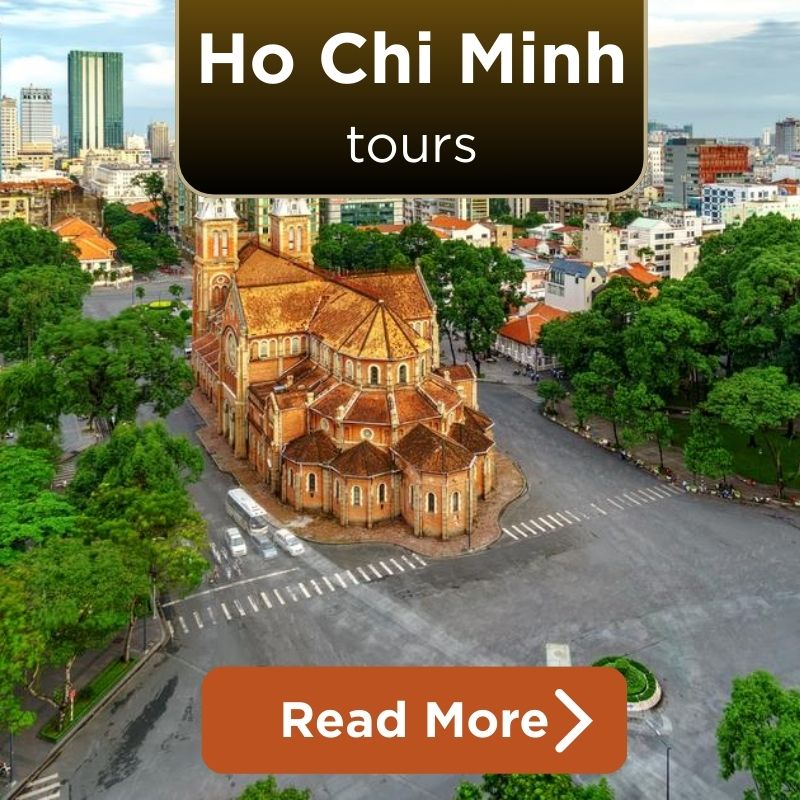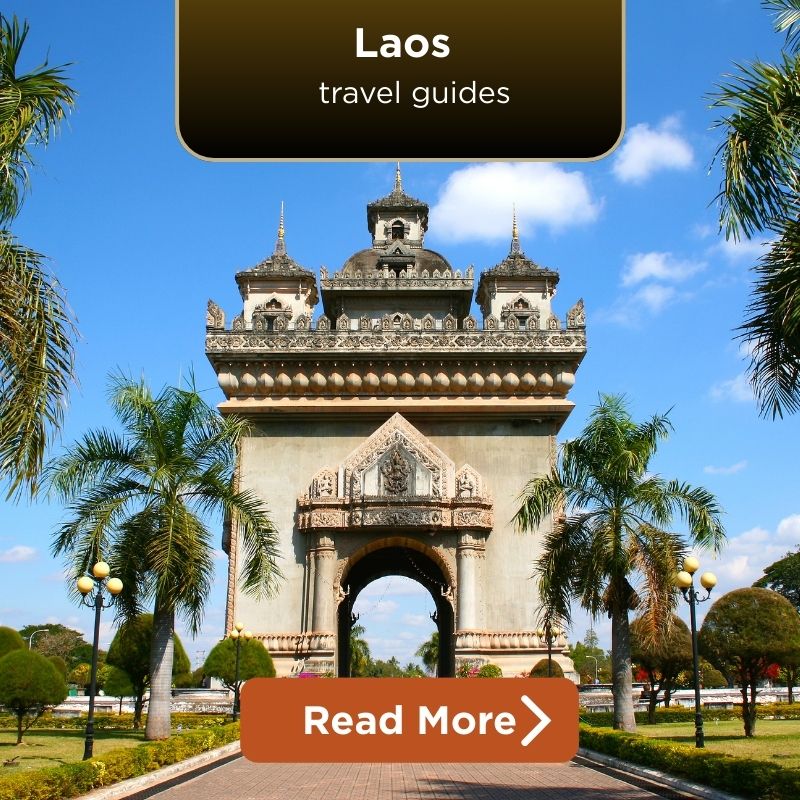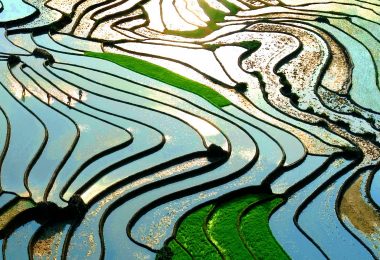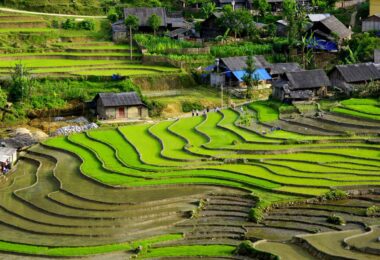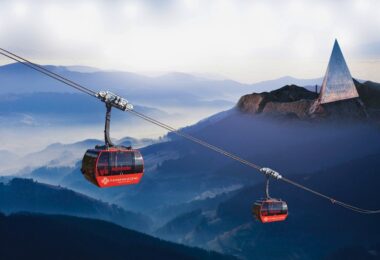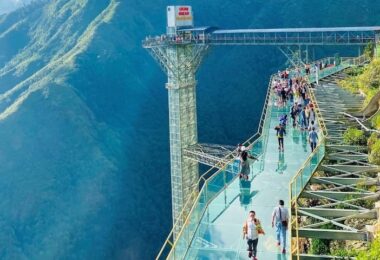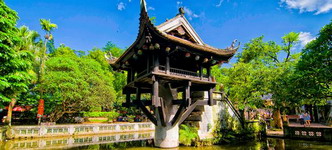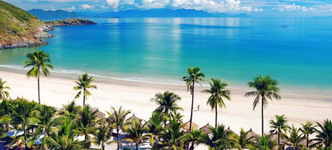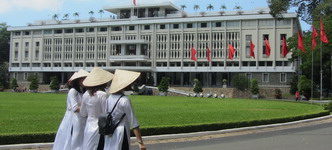Understanding Sapa’s Unique Climate
Because of its high altitude of 1,500–1,800 meters, Sapa enjoys a cool, temperate climate throughout the year, a far cry from the tropical heat of lowland Vietnam. The altitude gives Sapa, Vietnam’s weather to be pleasantly cool in summer and cold in winter, often plummeting almost to freezing in Sapa in December and Sapa Vietnam in January.
There are four recognizable seasons here:
- Spring (Feb–Apr): Mild weather, blooming landscape, ideal for trekking. Sapa in February and Sapa in March are my favorite months.
- Summer (May–Aug): Green everywhere, usual showers, and cool mountain breeze — ideal for seeing the rice terraces at their greenest.
- Autumn (Sep–Nov): Bright, dry days and a golden field of terraces during the rice harvest.
- Winter (Dec–Jan): Cold, foggy, and even frosty sometimes, winter in Sapa has its serene beauty.
Sapa’s temperature is usually between 15°C and 18°C, with winter temperatures between 0–5°C and summer temperatures reaching 24–25°C. The humidity is high all year round (80–90%), and the wind is strong, especially in open areas.
Sapa Weather Month by Month: Detailed Breakdown
January – Quiet, Cold, and Mystical
If a peaceful getaway to the hills is what you require, Sapa, Vietnam, in January is your perfect guide! When winter in Sapa reaches its peak, expect an average of 3°C to 10°C. Mornings greet you with misty valleys and white frost-topped roofs — an otherworldly and singular experience of weather in Vietnam’s Sapa.
Low rainfall (about 23mm) and humidity of about 80%. Few tourists visit in January, with cheap accommodations and serene village strolls.
Top activities:
- Stroll through Cat Cat Village and mingle with the Indigenous ethnic minority peoples
- Spend cloud-hunting at Ham Rong Mountain
- Absorb the heat of herbal spas in traditional Dao homes
Tip-check: Pack thermal layers — wind chill is no joke! Check the Sapa Vietnam weather daily, as conditions can change quickly.
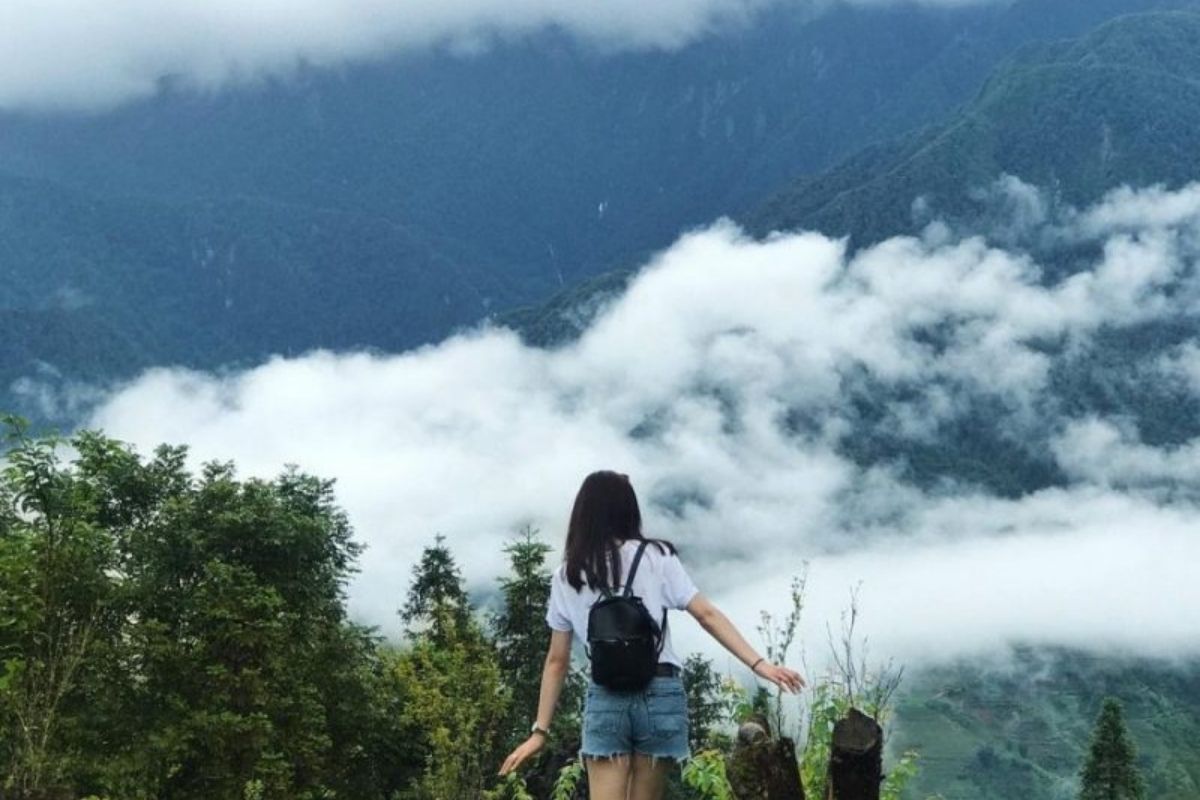
Spend Cloud-Hunting at Ham Rong Mountain (Source: motogo)
February – Fog, Festivals & Flower Buds
The turning point is February — Sapa slowly wakes up from its winter sleep. The Sapa Vietnam weather is slightly warmer with 8°C–14°C temperature, yet the Sapa Vietnam weather still holds on to its typical mist and mountain chill.
This is when flowers start blooming under the fog, producing a fantastical landscape that is fairytale-like. Humidity is still high (around 85%), and soft drizzles produce a sense of romance.
Top activities:
- Join early spring celebrations with local ethnic groups
- Go on light trail hikes as the fog lifts
- See the herbal gardens in Ta Phin Village
Pros: Not many people, flowers’ blossoms, ideal for silent photography.
Cons: Slippery roads; wear good footwear.
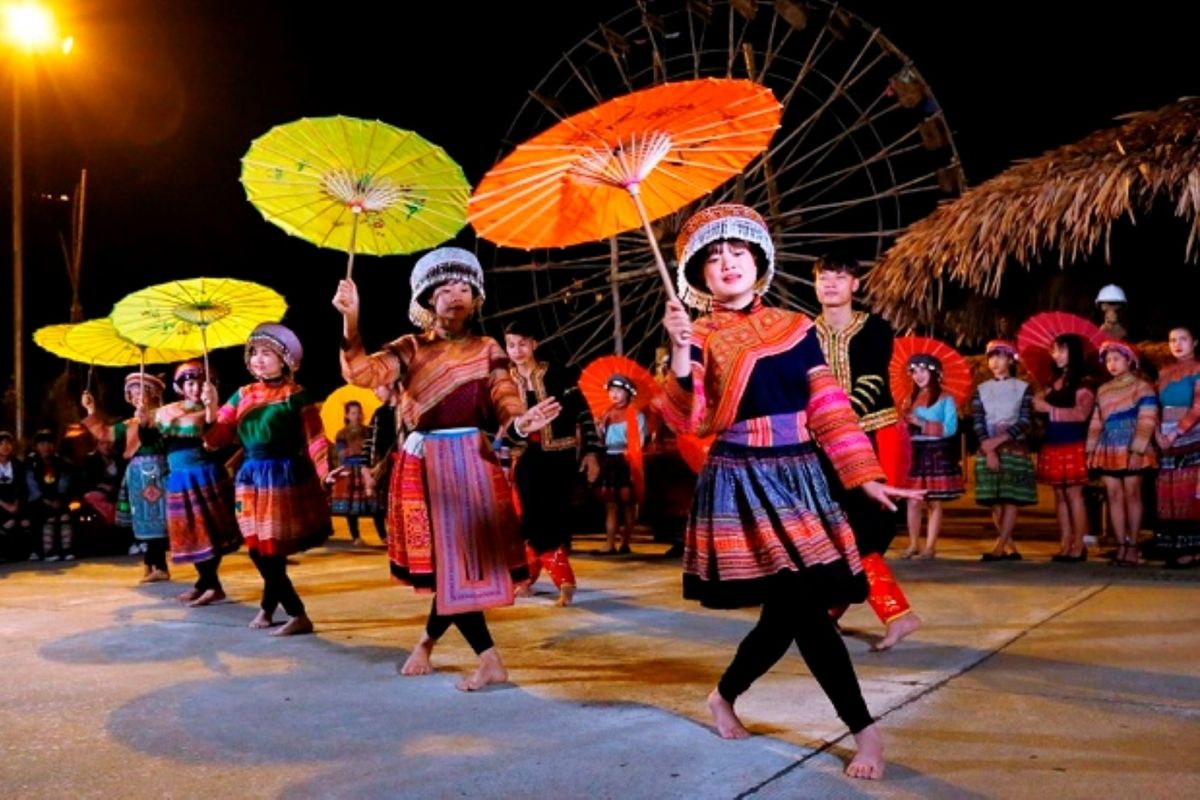
Join Spring Festivals with Ethnic Groups (Source: seatimes)
March – Blue Skies and Trail Time
Now we’re talking trekking season! Sapa in March is when nature opens its arms with dry paths, mild air, and clearer skies. The average temperature ranges from 10°C to 18°C, and the weather in Sapa, Vietnam, is finally stable enough for full-day adventures.
This is among Sapa’s optimum months to climb Vietnam’s roof, Fansipan. Wildflowers begin sprouting, and rice farmers begin plowing the grounds, providing you with an insight into ethnic minority cropping patterns.
Top activities:
- Conquer Fansipan Mountain either on foot or by cable car
- Hike to Muong Hoa Valley
- Buy at spring color-filled markets
Local tip: March mornings may still be cool, but the days warm up fast, dress sensibly, and don’t forget the sunscreen.
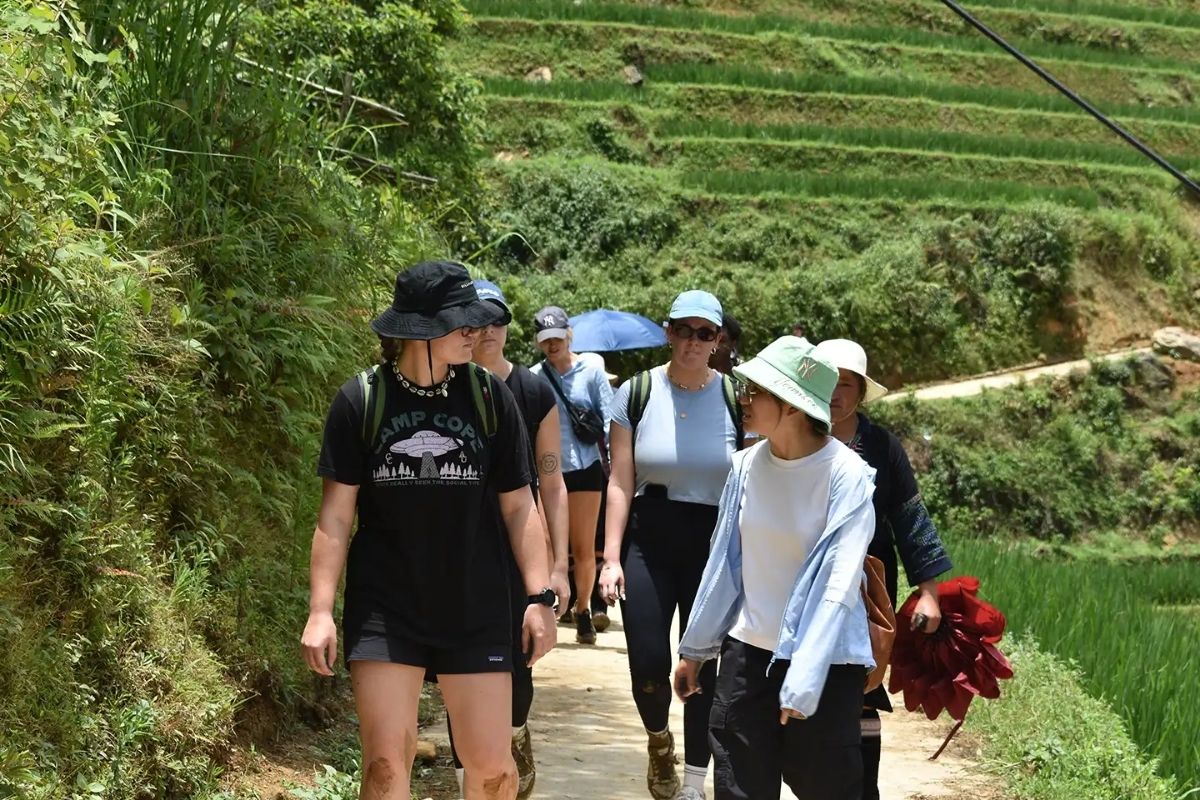
Hike to Muong Hoa Valley in March (Source: sapanomad)
April – Fresh Air, Scenic Valleys & Springtime Energy
April brings with it a whiff of fresh mountain air as Sapa begins to burst into bloom full swing. Sapa Vietnam weather in April is ideal — days are warm (17°C–22°C) but comfortable, and nights are cool, ideal for snuggling up under a thick blanket in a cozy homestay.
As spring festivals brighten up the villages, the entire region is alive with color, music, and joyful ethnic minority customs. The trails around Muong Hoa Valley are green, scenic, and more photogenic than ever.
Top activities:
- Join local ethnic minority spring festivals
- Trek scenic ridgelines in cool weather
- Visit Silver Waterfall or Tram Ton Pass
Predict Sapa Vietnam weather before hiking, as light rains may sweep in. Even so, April is one of the most colorful months in Sapa and therefore a good time to visit Sapa after Sapa, Vietnam January and Sapa in February.
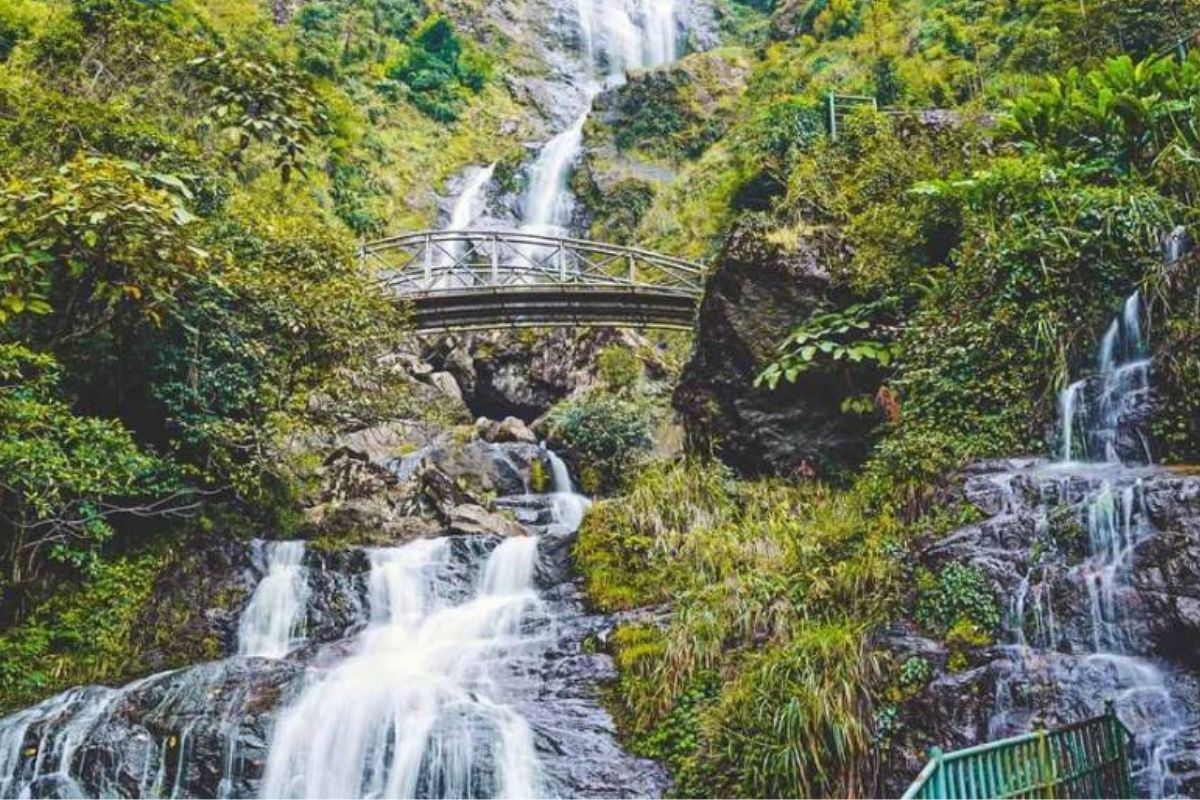
Silver Waterfall in April (Source: amazingo)
May – Green Terraces and Tranquil Beauty
By May, the mountains are blanketed in the first hues of green. Sapa Vietnam’s temperature ranges from 16°C to 24°C, and the weather in Sapa Vietnam is warm, tranquil, and full of new life. This is the pre-monsoon period — the rain begins to set in, but most of the days are still ideal for the outdoors.
Farmers begin planting in the rice terraces, giving you a front-row seat at the beginning of the rice harvest season. It’s also a great time to visit Ta Phin Village, renowned for its ancient monastery and Red Dao herbal culture.
Top activities:
- Trek through rice fields in the planting season
- Experience ethnic minority homestays
- Take photos of lush green terraced fields
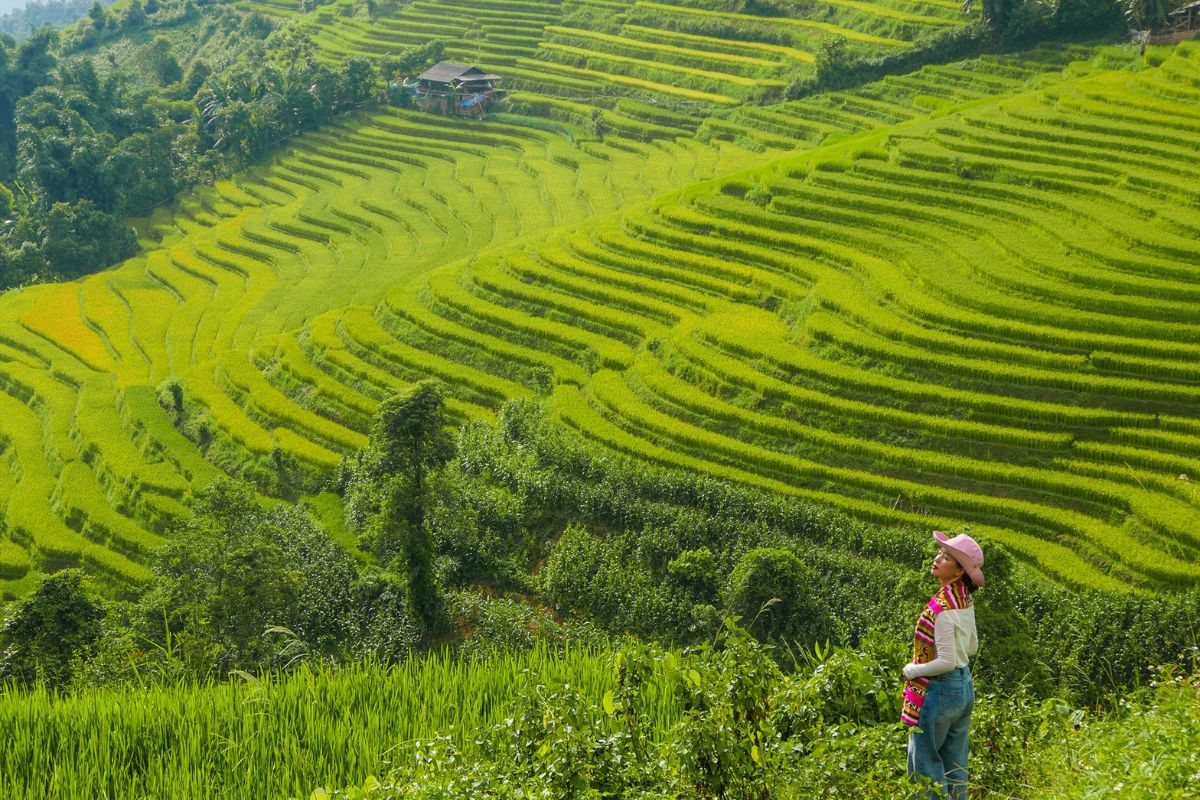
Green Terraced Fields in May (Source: laodong)
June – Rain, Plums & Cool Escapes
June is the official start of the summer months and brings increasing rainfall, especially in the afternoons. The temperatures are still mild (21°C–25°C) in Sapa, Vietnam, but the rain and mist cool the air and send the landscape into vibrant color.
It’s also the plum season in Sapa! Baskets of juicy mountain plums are sold by the roadside by locals, or you can be invited to pick your own.
Top activities:
- Spend a plum-picking day trip
- Go to misty passes like O Quy Ho for moody mountain photos
- Unwind with herbal baths on rainy afternoons
Stay current with the newest weather in Sapa, Vietnam, and bring rain-proof equipment. Even with the rain, June is among the most atmospheric months in Sapa — and a great alternative to the heat elsewhere.
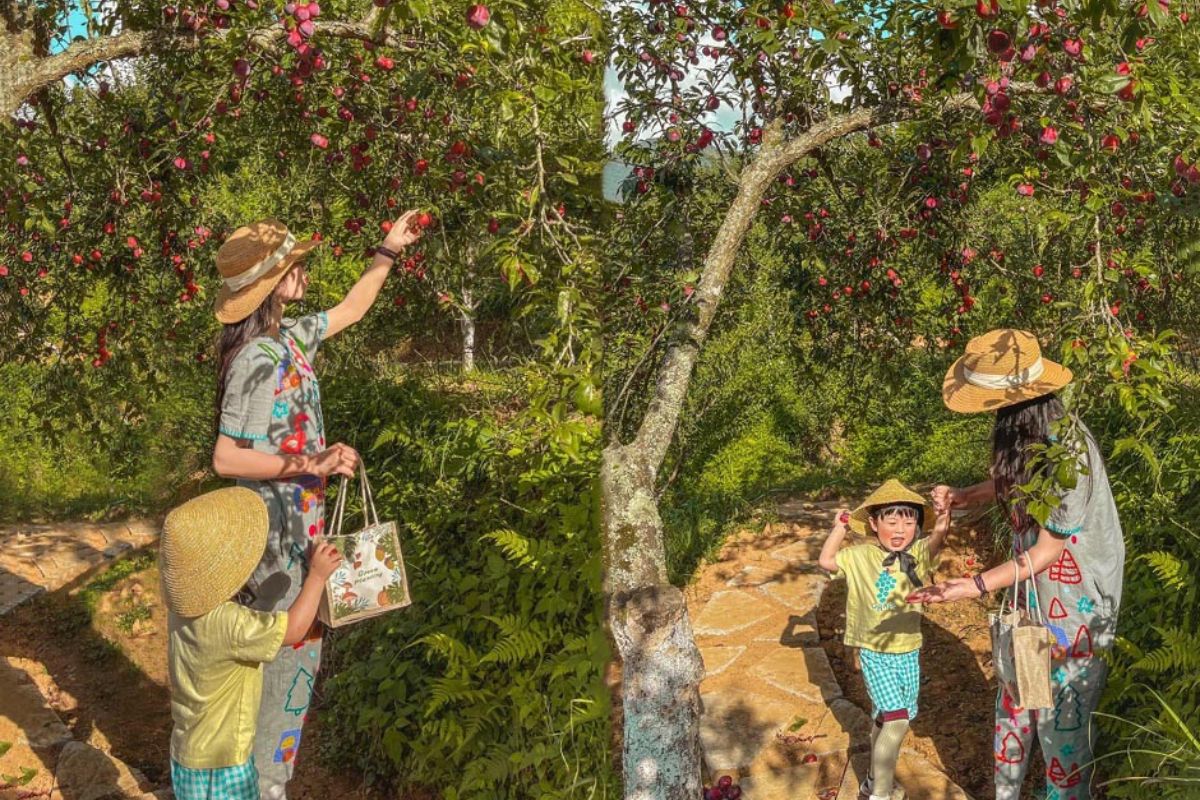
Plum-Picking Fun in Sapa’s Orchards (Source: vinwonders)
July – Misty, Festive, and Full of Life
Don’t let the humidity deter you — July in Sapa is character-filled! The Sapa Vietnam weather now is marked by daily afternoon showers and 18°C to 24°C temperatures, but the cultural calendar is in full swing.
From highland fairs to lively night markets, this is the period when Sapa hums with music, crafts, and cuisine shared by the region’s many ethnic minorities.
Top activities:
- Attend open-air local festivals
- Attend the Sapa night market, full of activity
- Savor classical herbal hot pot on cold evenings
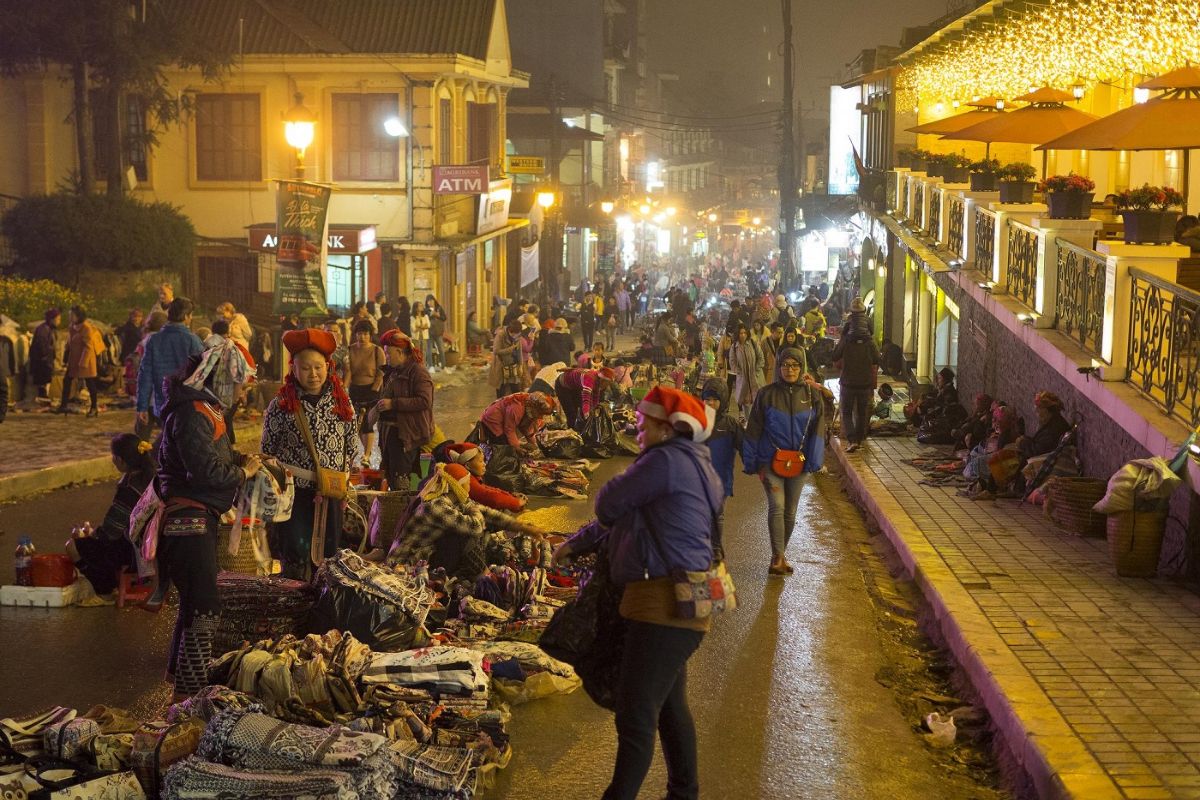
Sapa Night Market (Source: 123tadi)
August – Lush Landscapes & Foggy Magic
Welcome to the peak of foliage! August is the month of dreamy landscapes and spiritual mists. The weather in Sapa, Vietnam, is cooler than in lowland Vietnam, with an average of 20°C during the day and down to 10°C in the evening. Although over 20 days of rain may be anticipated, it’s usually in short periods.
It’s a photographer’s dream come true — mist rolling in over terraced fields, rice farmers tending the paddies, and mysterious mountains.
Top activities:
- Shoot postcard-perfect photos in the early morning
- Engage with local ethnic minority farmers
- Stroll the serene paths far from civilization
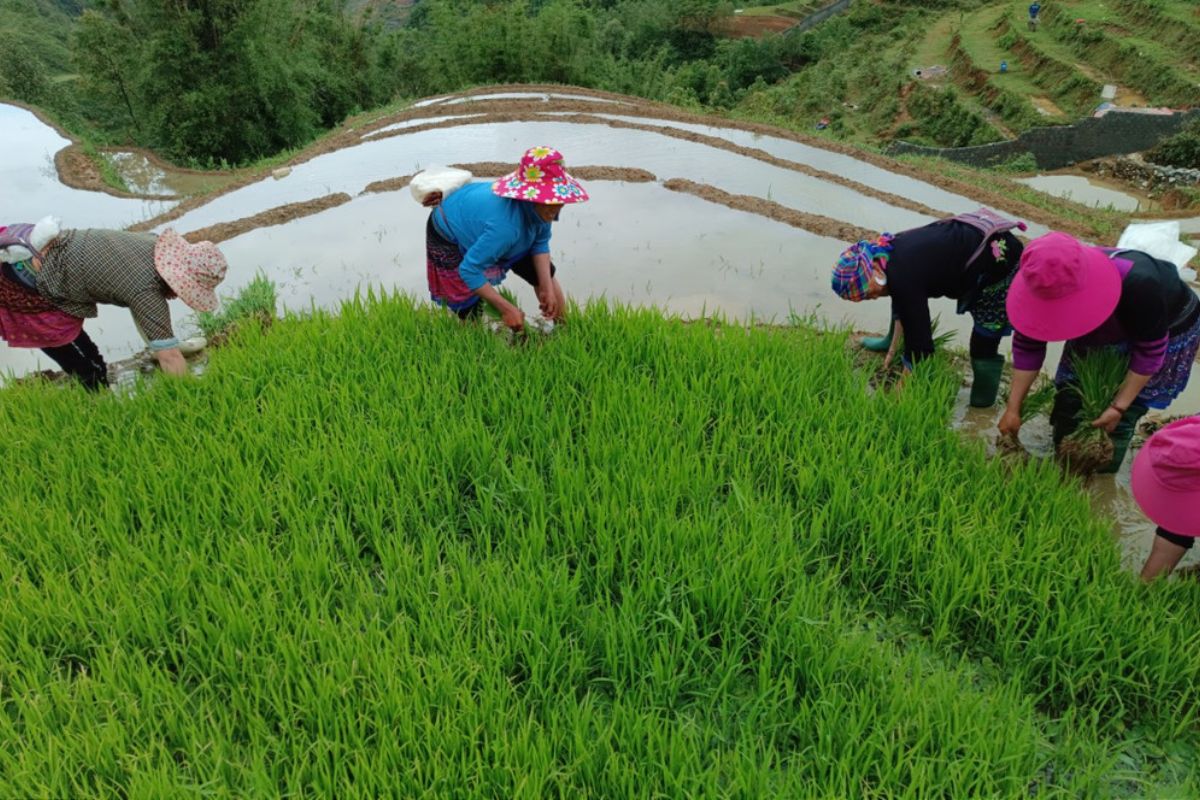
Sapa Farmers Tend August Rice Fields (Source: baolaocai)
September – Golden Fields & Trekking Bliss
September is truly the crown jewel of the months in Sapa. This is when the rice harvest season reaches its peak, and the terraced fields glow gold under the clear mountain sun. The weather in Sapa Vietnam during this time is stable, with temperatures ranging from 14°C to 24°C and much less rain than the summer months.
This is a dream month for hikers, photographers, and anyone who wants to immerse themselves in local ethnic minority culture.
Top activities:
- Trekking through Muong Hoa Valley or up to Fansipan Peak
- Capture golden rice fields in their full glory
- Visit ethnic markets bursting with color and local produce
Local tip: Book early! September is one of the most popular time to visit Sapa — and for good reason. The weather forecast in Sapa Vietnam is often sunny and dry, making long treks safe and rewarding.
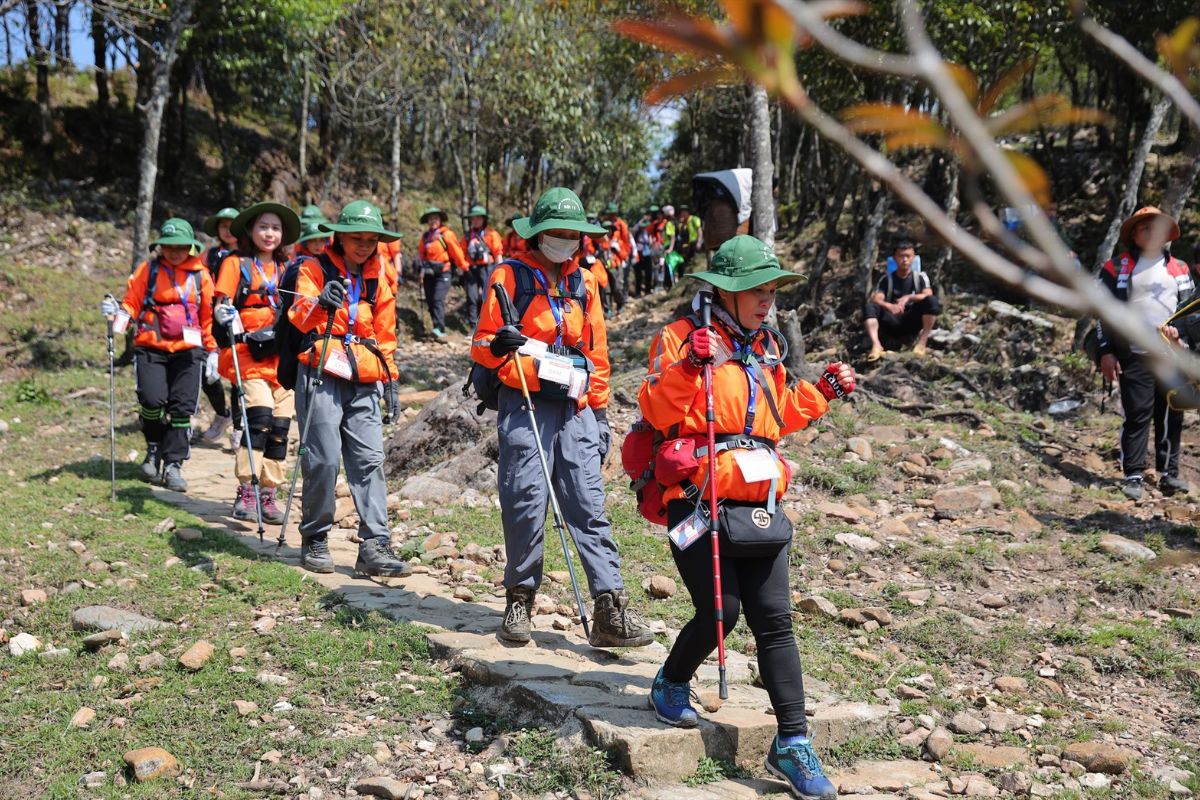
Trekking to Fansipan Peak in September (Source: laodong)
October – Picture-Perfect Skies & Crisp Adventures
October maintains the momentum from September with some of the finest hiking weather of the year. Sapa, Vietnam, the temperature is 13°C to 22°C, with minimal humidity, clear skies, and picture-postcard vistas of the golden rice fields before the last harvest.
If you liked Sapa’s cooler climate earlier in March, October offers the same, though with golden fields and even clearer skies.
Top activities:
- Multi-day valley trekking
- Cultural exchanges with ethnic peoples in rural villages
- Stargazing on clear nights
Although Vietnam Sapa weather in October is pleasant, always do a last check of the current weather in Sapa, Vietnam, before embarking on your trek — mountain weather can still change by the hour.
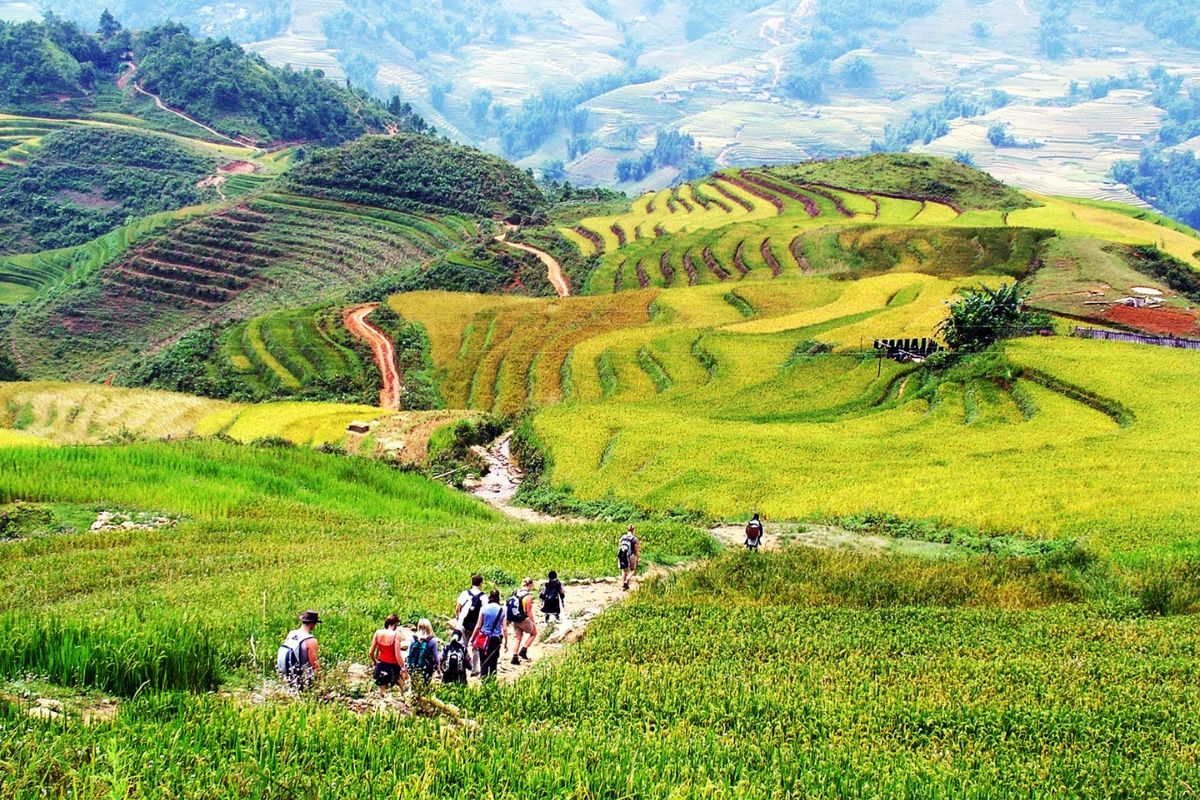
Multi-Day Valley Trekking (Source: ivivu)
November – Clouds, Romance & Quiet Trails
November is the start of cloud hunting season when mornings are filled with thick clouds swirling under the mountain ridges. The weather in Sapa, Vietnam, this month is cooler (10°C–18°C) and usually dry, with a soft mist rolling through the valleys.
The crowds thin out, so November is a great month in Sapa for honeymooners, solo travelers, or relaxation retreats.
Top activities:
- Climb Ham Rong Mountain for sweeping cloud vistas
- Relax at peaceful cafes with misty views
- Join cozy local festivals as the harvest period concludes
Pro tip: The nights turn cold, so dress accordingly and check the weather forecast in Sapa, Vietnam, prior to visiting the higher altitudes.
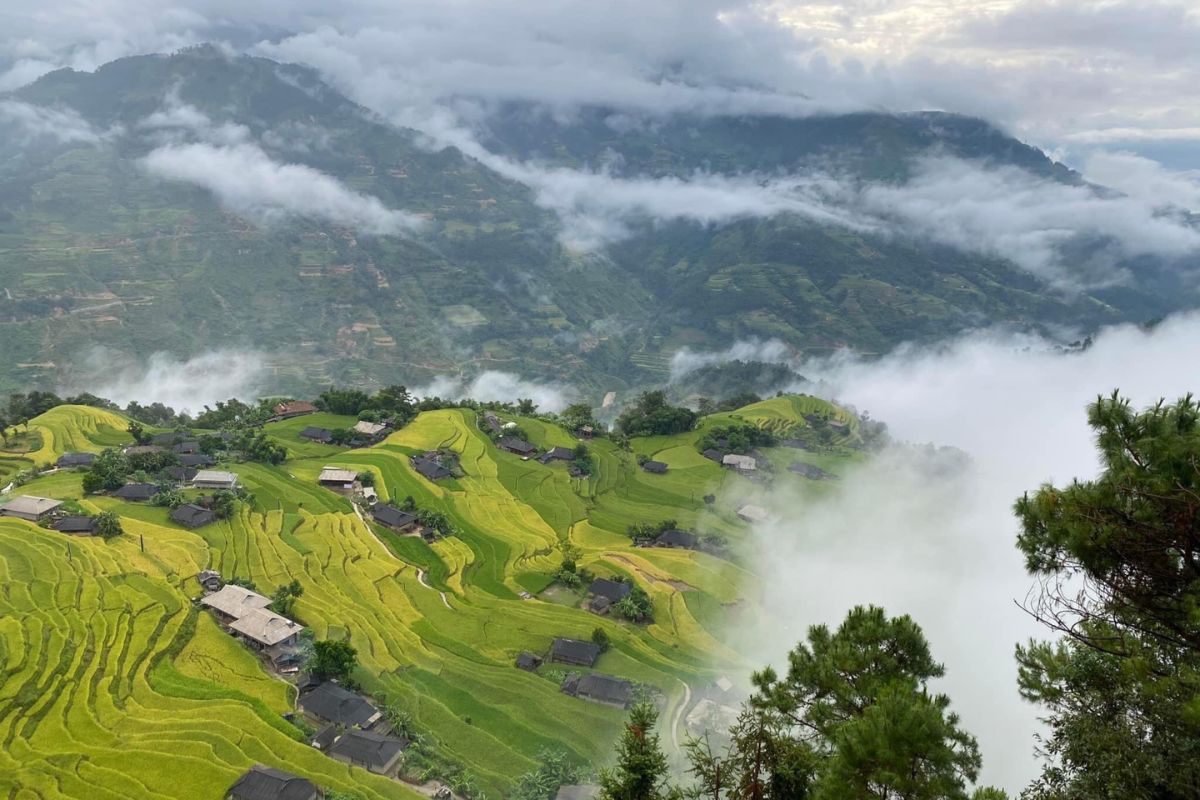
Clouds Rolled Like Waves Beneath the Mountains (Source: tuyengiao)
December – Cold, Magical & Festive
Winter in Sapa arrives full-blown by December! The temperature is between 5°C and 12°C and some years there is frost or even snow brushing the terraced fields, transforming Sapa into a mountain winter wonderland. The Sapa Vietnam weather now is refreshingly cool, dry, and still.
December is also festival time, with the New Year and local markets offering you a true cultural experience. If you’re traveling to Vietnam during winter, this is a rare chance to experience an alpine-like ambiance in Southeast Asia.
Top activities:
- Explore winter markets in Sapa Town
- Take photos of the frosty landscape — a stark difference from Sapa, Vietnam, January, or Sapa, February
- Warm yourself up in a homestay with hot herbal tea
It’s important to check the weather forecast in Sapa Vietnam daily, as storms can cause slippery conditions. Still, if you’ve experienced Sapa in March, you’ll enjoy how July offers a completely different but equally rich atmosphere.
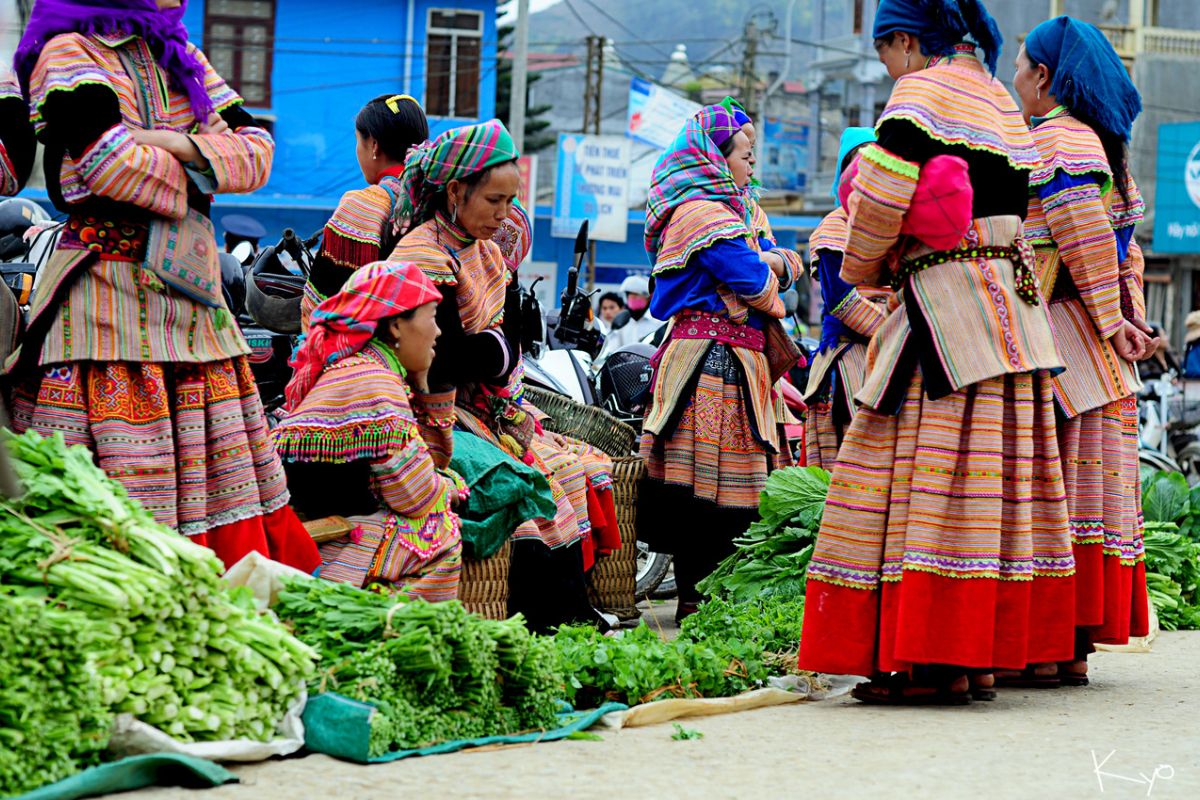
Winter Markets in Sapa Town (Source: linhviettravel)
Sapa Travel Tips Based on Weather Insights
Follow the Right Forecast Tools
Sapa Vietnam weather is quite unpredictable — sunny in the middle of the day, foggy at 3 PM! Cross-reference real websites such as AccuWeather, and Windy, or local apps such as VnExpress Weather. These will give you the latest updates on current Sapa Vietnam weather, and you can arrange that trek or market stroll accordingly.
For daily updates, tune into local forecasts at your hotel or homestay. Many locals know the mountains like the back of their hand — ask your host what’s coming!
Ideal Trip Duration by Season
Your perfect getaway depends on the months in Sapa you’re traveling:
- Spring (Feb–Apr): 3–4 days is optimal. Appreciate flowers, view villages, and enjoy early trekking weather. Don’t miss Sapa in February and Sapa in March for blue skies and floral beauty.
- Summer (May–Aug): Take 4–5 days. Rainy afternoons = more leisure time — perfect for slow travel and exploration of ethnic minority culture.
- Autumn (Sep–Nov): 3 days is sufficient for the golden rice harvesting period. Early morning treks, lovely photographs, and ideal trail conditions.
- Winter (Dec–Jan): 2–3 days. Marvel at the misty stillness of Sapa in December and Sapa, Vietnam in January. Good for relaxation and photography — just layer up!
Smart Booking Tips for High vs. Low Seasons
High Season: March–April and September–November
- Book early! These periods have the most stable Sapa Vietnam weather and attract both local and international tourists.
- Prices rise quickly — secure your room and train/bus tickets a few weeks in advance.
Low Season: May-August and Sapa in December
- Great deals on homestays and tours! While the weather in Vietnam Sapa may be wet or cold, you’ll enjoy peaceful landscapes and fewer crowds.
- Flexible timing is optimal here — rain delays are part of the summer package.
Cultural Etiquette by Weather & Season
Observe local life and weather customs to engage actively with ethnic communities:
- Rainy season: Roads get washed out. If locals recommend staying home, listen — they know the territory better than Google Maps!
- Harvest (Sep-Oct): Always ask permission before photographing farmers working the rice terraces.
- Cold months: Welcome villagers warmly. A friendly “Xin chao" and a smile go a long way when fog envelops the hilltops.
Conclusion
From the wintry beauty of Sapa in December and Sapa, Vietnam, in January to the flowering beauty of Sapa in February and the trail-perfect days of Sapa in March, the weather of Sapa, Vietnam, has something special every season. Whatever! If you wish for foggy mornings, sun-kissed rice terraces, or bright festivals, there is always the ideal time to visit Sapa. Do not forget to refer to the Sapa Vietnam weather forecast and look through the best Sapa Tours appropriate for your preferred travel month!

















